Hi Readers: Continuing from Part I, there were 9 other fatal accidents and 4 nonfatal accidents (1 serious injury) in the December 2007 accounting. The first accident, a Beech A36 -3 fatal - appeared as a typical VFR, no flight plan, 391 nm X-C flight encountering IFR conditions, colliding with mountainous terrain at 7,000 feet near Minersville, Utah. The reported weather at Melford, Utah (5,039' msl) was visibility 13/4 miles in light snow, scattered clouds at 2,500', overcast at 3,000', temperature -6 degrees C., dewpoint -7 degrees C. A private pilot occupied the left seat, an ATP was in the right seat, and a student pilot occupied the rear passenger seat. There were no known details regarding a weather briefing or weather check prior to takeoff or in flight.
The next 3-fatal accident involved a Beech V35B aircraft on an instrument flight plan in IFR conditions, and on an ILS approach to Springfield, Illinois. The pilot reported a problem (unk), but continued the approach. The aircraft impacted terrain 3 miles out from the Outer Marker, on the localizer centerline. The weather at Springfield was reported as visibility 2.5 miles with mist, overcast at 500' agl, temperature 3 degrees C., and dewpoint 2 degrees C. The next fatal accident, (2 fatal) involved a Beech 200 aircraft, a corporate - Executive flight, impacting a hangar at Salmon, Idaho, after takeoff in a snowstorm, trying to maintain VFR flight prior to clearance delivery of an IFR clearance by ARTCC. The weather conditions were not reported (obviously IFR conditions).
Another 2-fatal accident involving an instrument-rated pilot in a Cessna 210N on a X-C IFR flight plan collided with ground at Bloomsfield, Kentucky. The last known communication with ATC indicated that the pilot "read back" a clearance to descend from 8,000' to 6,000'. Radio and radar contact with the flight was lost. The weather was not reported. The next 2-fatal accident involved a Cessna R182 Commercial Flight Instructor and a student on a night, no flight plan, instructional flight from Orlando, Florida to Meridianville, Alabama. No weather was reported. The aircraft crashed near Woodland, Alabama.
There were two 1-fatal accidents involving collision with ground while maneuvering in night VFR conditions; one a Piper PA-28 near Ortiz, Washington, circumstances unknown, and a PA-32 on a night marginal VFR X-C flight near Warren, Wiisconsin. The weather near the accident site was visibility 6 miles, haze, overcast at 1,800 ', temperarture 2 degrees C. and dewpoint -2 degrees C. A witness near the accident site reported ground fog. Another 1-fatal Piper PA-28 involved a night forced landing when the engine quit near Augusta, Georgia; and a 1-fatal Beech 60 aircraft impacted terrain on a VFR X-C takeoff at Newcastle, Delaware. The weather was reported as wind 21 knots, gusting to 26 knots, visibility 10 miles, temperature 0 degrees C., and dewpoint -3 degrees C. At the accident site the gear was found retracted, the right flap was fully extended, and the left flap was fully retracted. Both flaps were observed extended prior to takeoff.
There were 4 Homebuilt aircraft accidents and 1 Sports aircraft accident, and 1 gyrocopter accident reported. One Homebuilt accident, killing the pilot, impacted trees on takeoff when the canopy opened and a fabric cover exited the cockpit and contacted the propellors. Two other serious injury accidents; one stalled on takeoff, and the other lost engine power inflight. Another Homebuilt, a Vans GA, lost complete power in flight and nosed over on landing. The pilot visually verified that both fuel tanks were full prior to departure (providing a range of 3 hours and 45 minutes of flight). At the accident site, both fuel tanks were found to be empty. The 2-fatal gyrocopter accident, an Althouse RAF 2000 GTX, contacted ground near Cromley, Texas, apparently an engine problem. A Sport pilot in a Garniss STOL 701 was killed during an apparent buzzing accident.
Four other accidents were reported, one a Mooney M20C when the engine caught fire inflight at night. The pilot managed a forced landing near Phillipsburg, Kansas. The pilot and a passenger received serious injury. Two ATp's in a Cessna 551, with 6 passengers, landed at Coeur d' Alene, Idaho in 21/2 inches of snow slush, and departed the runway when the nosegear failed. The pilot was told there was 3/4 inch of snow on the runway. Another, a Piper PA-30, sustained substantial damage when the landing gear collapsed during the landing roll at Bridger, Montana. And a Cessna 152 was damaged during a forced landing following loss of engine power during cruise near Ft. Worth, Texas. The student pilot was not injured.
The majority of the fatal accidents were weather-related. We'll wait out the NTSB Investigator's findings on those accidents.
A word or two regarding the GA and fatal accident rates for 2007. Some of the aviation experts have stated or indicated a reduction in those rates for 2007 from 2006. The data, however, based on the best available, does not really indicate a reduction. Rather, a slight increase in the GA rate and a slight decrease in the fatal accident rate. Based on accidents / 100,000 flying hours, the reported rate for 2006 was 6.64 and 1.32. The computed rates for 2007, based on NTSB accidents through November 2007 and the addition of the December accidents result in rates of 6.78 and 1.24 respectively. And a higher number of
accident and fatal accidents in December would increase the rates, and a lesser number of flying hours (from the estimated) would also increase the rates.
Thanks for listening. R.S.
Friday, January 11, 2008
2007 December Accidents/ incidents - Part II
Subscribe to:
Post Comments (Atom)

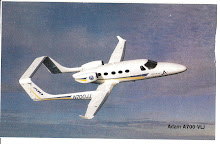

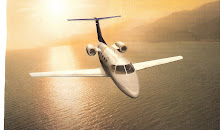


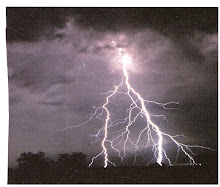

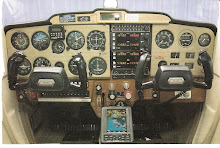
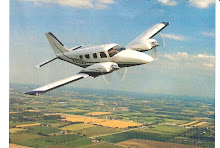
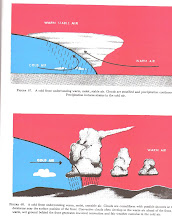
No comments:
Post a Comment